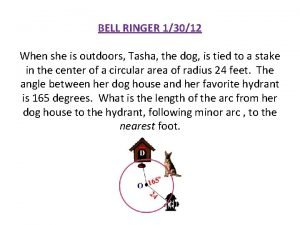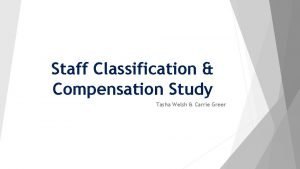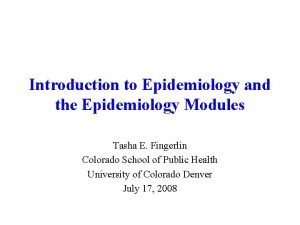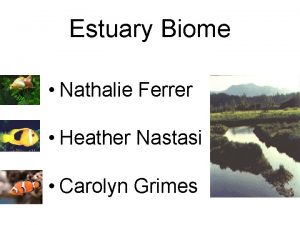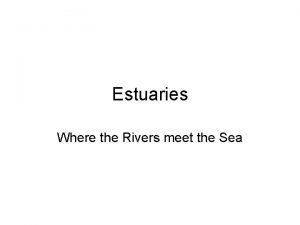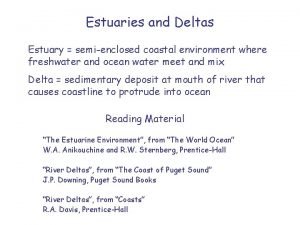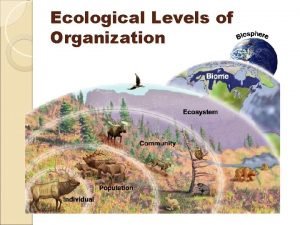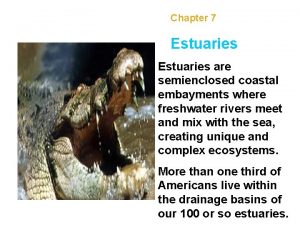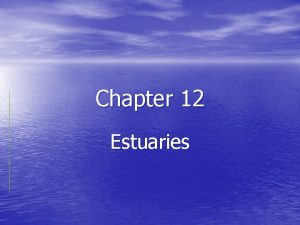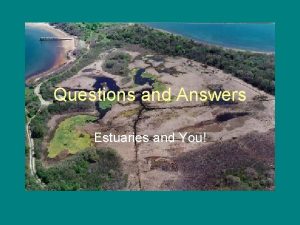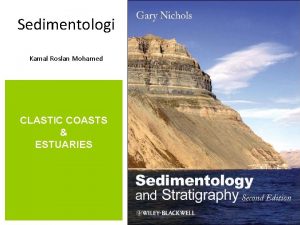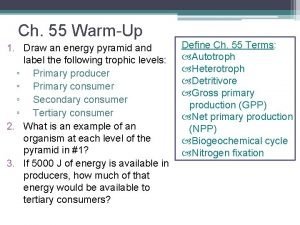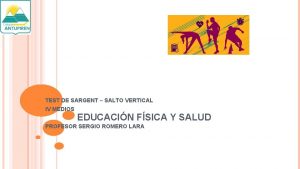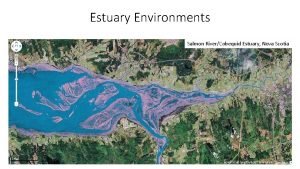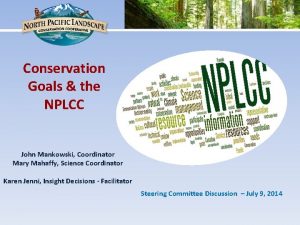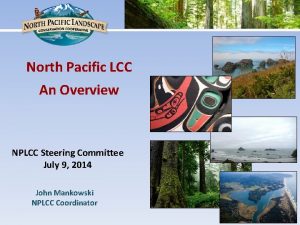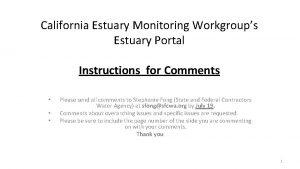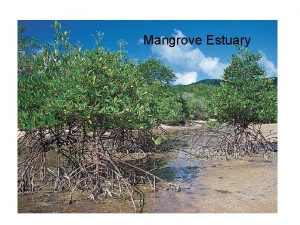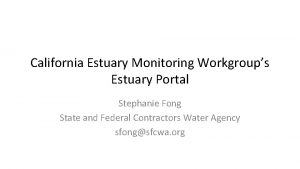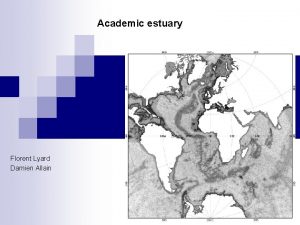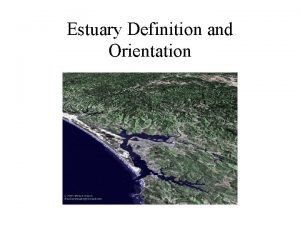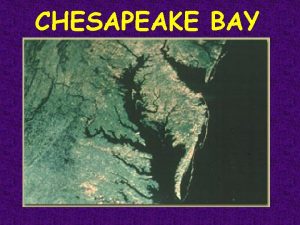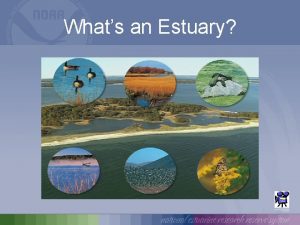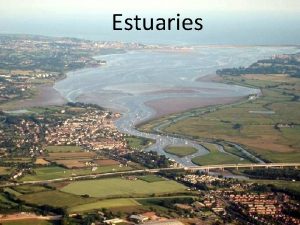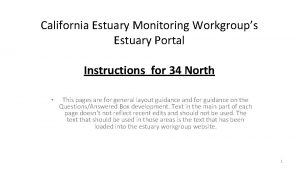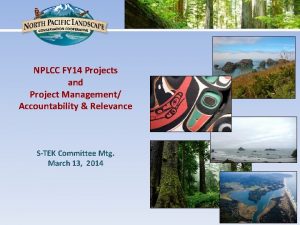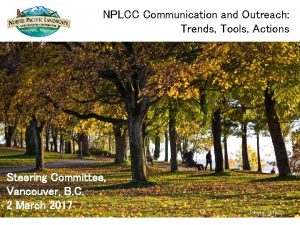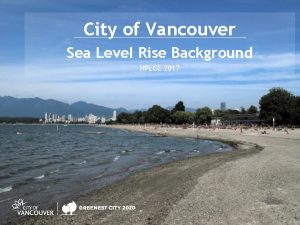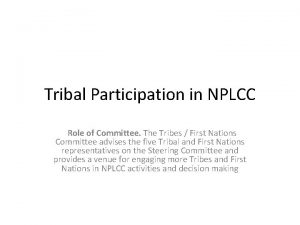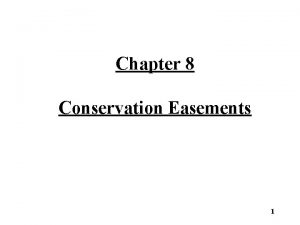Pacific Estuary Conservation Program NPLCC Tasha Sargent Pacific




















- Slides: 20

Pacific Estuary Conservation Program NPLCC Tasha Sargent Pacific Birds Habitat Joint Venture Coordinator (Canada) March 1, 2017

Page 2 – 27, 2021

Contents • What is the Pacific Estuary Conservation Program • • (PECP) Estuaries in BC Ranking Methodology Results Intended Uses Actual Uses Threat Assessment Update to Ranking Expanding the Ranking Across the Pacific Coast Page 3 – 27, 2021

What is the PECP? • The Pacific Estuary Conservation Program was created in 1987 under the Pacific Coast Joint Venture (now Pacific Birds Habitat Joint Venture) – JVs are coordinated through a contribution of ECCC staff time • Coalition of government and non-government agencies • Mechanism to pool both financial and technical resources amongst • • • the partners Responsible for the securement and enhancement of estuarine habitats of conservation importance in BC PECP partners have successfully secured thousands of hectares of shoreline and intertidal habitats in many of BC's major estuaries Winner of the International Ramsar Convention Award in 1999 Page 4 – 27, 2021

Estuaries in BC • Estuaries make up <3% of BC’s coastline but are • • seasonally or annually important to a variety of species As of 2007, 43% of BC’s estuaries are threatened by coastal development, modification, and pollution Need for : – an objective, landscape-level scientific assessment to ID important areas for sustaining waterbird populations, and – timely/efficient allocation of resources to conserve priority sites Page 5 – 27, 2021

Page 6 – 27, 2021

Estuaries in BC - Ranking • In 2007, PECP partners published a • • ranking of BC’s estuaries for waterbirds Identified and mapped 442 estuaries Ranked for biological importance to waterbirds using data and metrics of: – Estuary size – Habitat type and rarity – Herring spawn occurrence – Waterbird use – Intertidal biodiversity Page 7 – 27, 2021

Page 8 – 27, 2021

Methodology • Estuary boundaries were defined to include the intertidal (below coastline to lowest normal tide) and supratidal (above coastline) zones as well as habitat features connected to each river or stream above the coastline to an upstream distance of 500 m Page 9 – 27, 2021

Results Page 10 – 27, 2021

Results • PECP Identified Estuaries cover 74, 585 ha ranging in size from <1 • • • ha to the 21, 694 ha Fraser River estuary Most estuaries in British Columbia are small (i. e. <10 ha) with four exceptionally large estuaries (i. e. >1, 000 ha) located in the Lower Mainland Coastal Gap ecoregions The largest estuaries (>1, 000 ha) account for >63% of all estuarine area Although the Lower Mainland ecoregion contains only a small proportion of all estuaries it contains 39 of all estuarine area due to the presence of two of the largest estuaries: the Fraser River and the Nicomekl/Serpentine River complex. Page 11 – 27, 2021

Results • 5 Importance Classes – IC 1: highest ranked, relative rankings of 80 -100% of max. scoring estuary – IC 2: relative rankings of 60 -80% – IC 3: relative rankings 40 -60% – IC 4: relative rankings 20 -40% – IC 5: relative rankings 0 -20% 49 estuaries, not distributed equally throughout BC Important note: Fraser River Estuary was not assigned to any importance class due to a lack of data consistent with the methodologies. Despite this, it is well documented and recognized that the Fraser River Delta remains one of the most important estuaries in BC for waterfowl. (Ramsar, IBA) Page 12 – 27, 2021

Page 13 – 27, 2021

Intended Uses for Conservation • Provides spatially explicit foundation to accumulate future • information Ranking process highlights data gaps – E. g. >59% missing waterbird surveys, can be used to direct future survey efforts • Knowledge of current biological attributes/potential – can be combined with current conservation and socioeconomic status to create a prioritization list for conservation initiatives. Page 14 – 27, 2021

Actual uses for conservation so far • Draft Federal Wetland Policy (for environmental • • • assessments) Prioritization of conservation actions (when funds were available) National Wetland Conservation Fund priority areas NAWMP continentally significant areas Prioritization of actions in environmental emergencies (i. e. oil spills) Threat assessment by C. Robb with Living Oceans Page 15 – 27, 2021

Threat Assessment • 20 Threat Categories identified – Terrestrial (8) – Marine (8) – Increased Atmospheric CO 2 (4) • 2 systems in Strait of Georgia had 15 threats, average 11 • • • threats Overall 7. 9 threats per estuary-watershed Systems with protected areas faced average 7. 6 threats Less area protected = more threats Page 16 – 27, 2021

Threat Assessment From: Robb, C. K. 2014. Assessing the Impact of Human Activities on British Columbia’s Estuaries. Vol 9, Issue 6. www. plosone. org Page 17 – 27, 2021

Update to PECP Estuary Ranking • Problem polygons identified in original mapping currently being reviewed – i. e. missing estuaries, too large, too small, non-estuaries • Preliminary re-ranking conducted using new data such as new bird surveys and fisheries data Page 18 – 27, 2021

Expansion of Estuary Ranking • Methodology could be applied along the entire Pacific • • Coast Pacific Birds Habitat Joint Venture is reviewing methodology and results for Coastal Wetland Conservation Priority development Opportunity to review estuaries on the entire Pacific Coast in terms of threats given Carrie Robb used same method in her thesis as was used in California (adapted to data and issues appropriate to BC) Page 19 – 27, 2021

Thanks! tasha. sargent@canada. ca Page 20 – 27, 2021
 Tasha moreno
Tasha moreno Wa tu izzu man tasha translation in english
Wa tu izzu man tasha translation in english When she is outdoors tasha the dog
When she is outdoors tasha the dog Tasha welsh
Tasha welsh Tasha big feet
Tasha big feet Tasha introduction
Tasha introduction Estuary biome
Estuary biome Salt wedge estuary
Salt wedge estuary Estuary circulation
Estuary circulation Biomes foldable
Biomes foldable Estuary circulation
Estuary circulation Drowned river estuary
Drowned river estuary Pavis humber
Pavis humber Questions and answers about estuaries
Questions and answers about estuaries Estuary
Estuary Estuary food pyramid
Estuary food pyramid Salto sargent
Salto sargent No frills
No frills Catherine sargent md
Catherine sargent md John sargent md
John sargent md Dr. dudley sargent invented 80 machines, using
Dr. dudley sargent invented 80 machines, using


